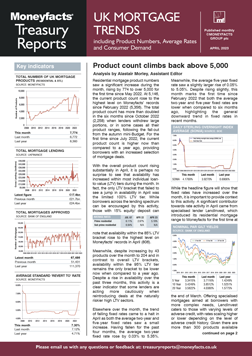Notes to editors
You are welcome to use part or all of this press release, so long as we are sufficiently sourced. We would appreciate a link back to Moneyfactsgroup.co.uk.
Pioneering financial comparison technology for over 35 years, Moneyfacts Group plc is the UK’s leading provider of retail financial product data. Used by virtually every bank and building society in the UK, and supplied to the Bank of England, Financial Conduct Authority, Financial Ombudsman Service, HM Treasury, Prudential Regulatory Authority and UK Finance.
Our expert research team monitors the thousands of mortgages, savings, credit card, personal loan, banking, life, pension and investment products in the UK.
For more information about us please see our key facts.
Broadcast
Our broadcast suite enables our finance experts to appear in-vision for television, and we regularly comment live on national and regional radio.
To arrange an interview for radio or television, please contact our press department. We have an in-house broadcast room.
Notes to editors
You are welcome to use part or all of this press release, so long as we are sufficiently sourced. We would appreciate a link back to Moneyfactsgroup.co.uk.
Pioneering financial comparison technology for over 35 years, Moneyfacts Group plc is the UK’s leading provider of retail financial product data. Used by virtually every bank and building society in the UK, and supplied to the Bank of England, Financial Conduct Authority, Financial Ombudsman Service, HM Treasury, Prudential Regulatory Authority and UK Finance.
Our expert research team monitors the thousands of mortgages, savings, credit card, personal loan, banking, life, pension and investment products in the UK.
For more information about us please see our key facts.
Broadcast
Our broadcast suite enables our finance experts to appear in-vision for television, and we regularly comment live on national and regional radio.
To arrange an interview for radio or television, please contact our press department. We have an in-house broadcast room.











